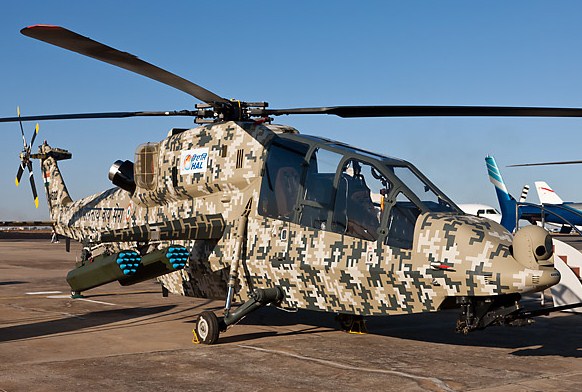India’s choice of attack helicopters in the mountainous Himalayas is indigenous Light Combat Helicopters (LCH) over its new US-made AH-64E Apache. The Indian Air Force (IAF) has deployed two LCH in Ladakh amidst the ongoing standoff between India and China.
While Indian Army Eyes AK-203, Kalashnikov Group Unveils Its Latest AK-19 Rifles
Developed by state-owned Hindustan Aeronautics Limited (HAL), IAF has ordered 30 more LCH. “It is the lightest attack helicopter in the world, designed and developed by HAL to meet the specific and unique requirements of the Indian Armed Forces, reflecting the crucial role of HAL in Atmanirbhar Bharat,” said R Madhavan, Cheif of Media Communications, HAL.

“LCH is a potent weapon platform because of its state-of-the-art systems and highly accurate weapons that are capable of hitting any type of target by day or night,” said a HAL press release.
“The other features of LCH include its ability to operate in the complete ‘Area of Responsibility’ (AOR) and altitudes. It has the capability to carry adequate weapon load at high altitudes under varied conditions. All these characteristics make it most suitable for hot and high altitude operations.”
Countering Pakistan’s JF-17s, India Deploys LCA Tejas Along India-Pakistan Border
Meanwhile, India also possesses another attack helicopter: the U.S. AH-64E Apache which is considered the most advanced and deadly attack helicopter in the world. As part of a 2015 deal worth $3 billion, India recently received 22 Apaches along with 17 CH-47 Chinook helicopters from the US.
Apache has Hellfire anti-tank missiles and Longbow fire control radar. The Indian AH-64E Guardian version features a more powerful engine, better data networking, and improved composite rotor blades. Compared to the LCH, the Apache is faster, has more engine power, and carries far more weapons, though the LCH has a longer range.
However, the IAF has chosen LCH over Apache due to its ability to perform at high altitudes, which can be a challenge for rotary-wing aircraft. The Ladakh region in the Himalayas, where India and China are engaged in a military standoff, has an altitude between 10,000 – 18,000 feet.
Pakistan Bulk Buying Chinese Version Of MQ-9 ‘Reaper’ Drones From Beijing – Reports
LCH has proven its might in 2015 when several test landings were conducted on the Siachen glacier in Ladakh, at altitudes up to 15,800 feet while carrying a modest 500-kilogram load. While the AH-64E can fly up to 20,000 feet, experts have argued that the LCH is more suitable for the Himalayas.
“While the Apaches would do well in the plains, they would have limitations operating in the upper reaches of the Himalayas,” wrote Fali H Major (Retd.), Former Indian Air Chief Marshal “During the Kargil War of 1999, there was a need felt for armed attack helicopters capable of operating at high altitude.
That’s where the LCH fits in. It has successfully been tested in altitudes over 13,000 feet and was the first attack helicopter to land at the forward landing base in Siachen.”
Pakistan Bulk Buying Chinese Version Of MQ-9 ‘Reaper’ Drones From Beijing – Reports
However, there is a tradeoff between the capabilities of the two attack helicopters viz-a-viz the armament. While AH-64 can fly with 30 millimeter cannon and up to 16 Hellfire missiles and Hydra 70-millimeter unguided rockets, LCH is lightly armed with 20-millimeter cannon and up to four missiles or rockets.
Even with such a disadvantage, LCH makes for a better choice in the mountainous regions as it is more important to have an armed helicopter that can fly above the mountains instead of destructive ones which may not stand the challenging terrain and weather conditions.




